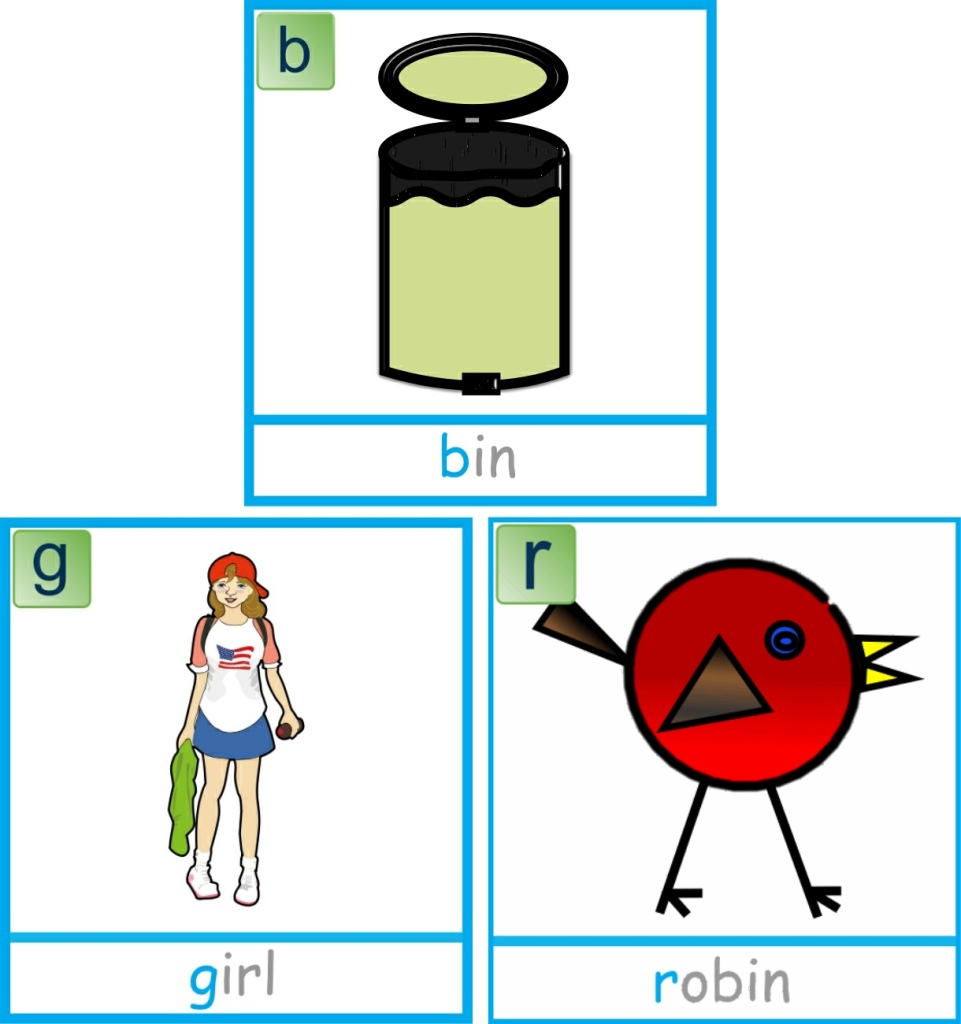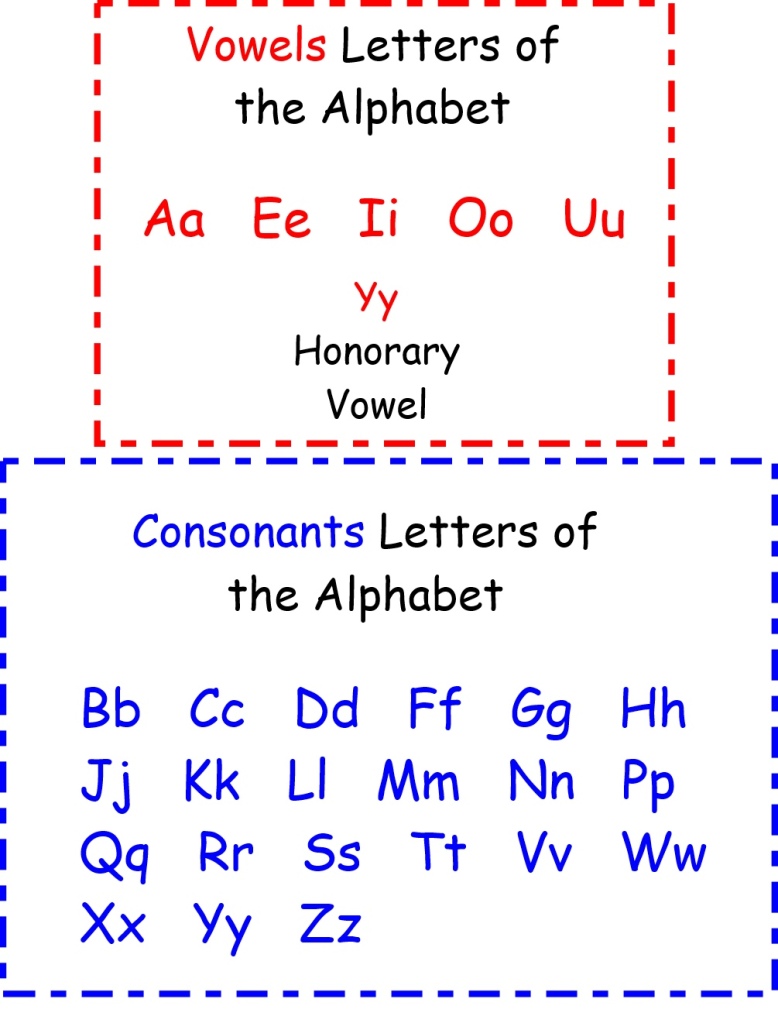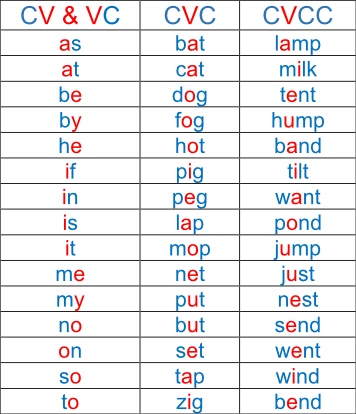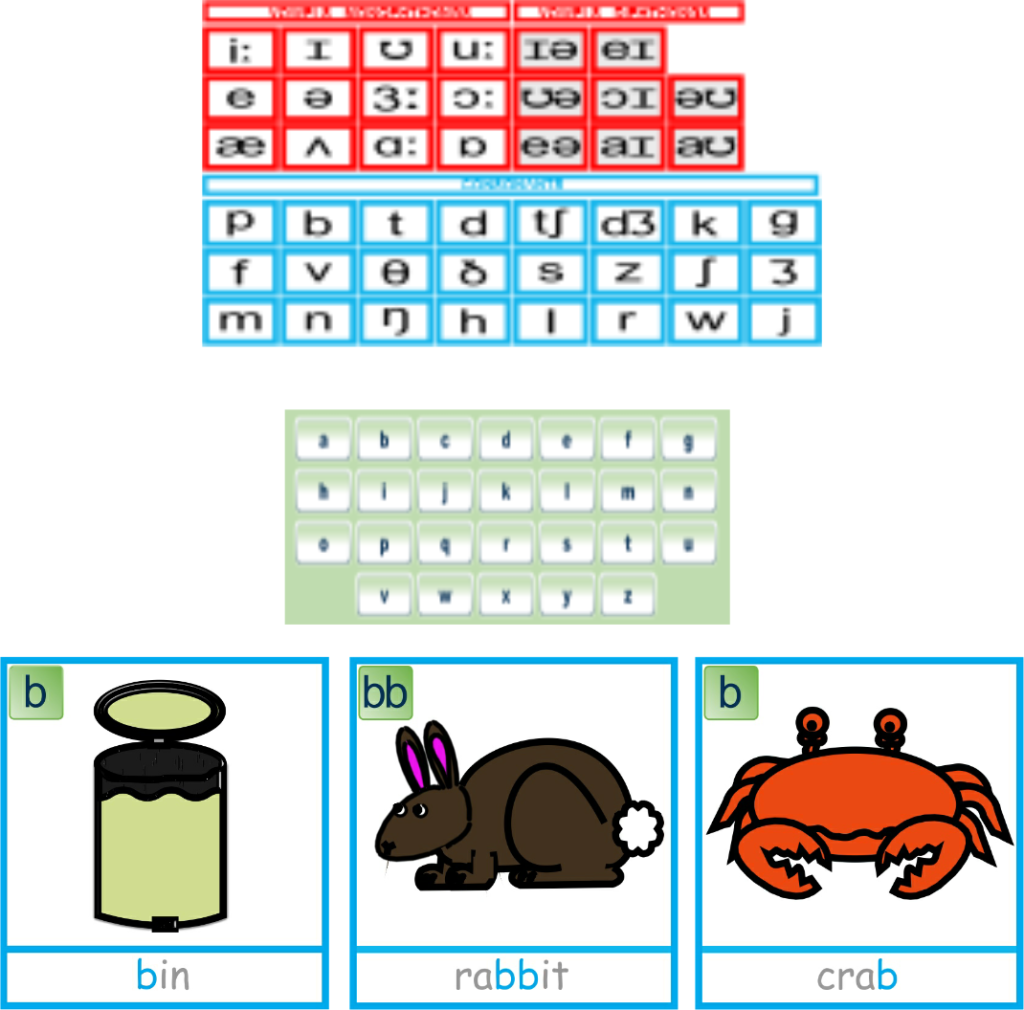
There are 24 consonant sounds in the English language. A consonant sound is made (produced) when the air flow is being restricted in some way, which means that the mouth doesn’t open as wide and so the jaw doesn’t drop noticeably, which is different from vowel sounds.
Here is a list of just some of the most commonly seen letter and letter combinations used to represent the 24 consonant sounds. For a more comprehensive lists check out our English Phoneme Chart or Alphabet Keyboard which can be found on our ‘Phonemes’ page: https://www.teachphonics.co.uk/phonics.html
- /b,(b)/ bin, rabbit
- /k,(k)/ cat, key, duck, queen, anchor, broccoli
- /ch,(ʧ)/ church, watch
- /d,(d)/ dog, ladder, towed
- /f,(f)/ fish, puffin, phone, laugh
- /g,(g)/ girl, digger, ghost
- /h,(h)/ hen, who
- /j,(ʤ)/ jigsaw, giant, bridge
- /l,(l)/ lion, llama
- /m,(m)/ man, hammer, lamb
- /n,(n)/ nest, penny, knife, gnome
- /ng,(ŋ)/ king, sink
- /p,(p)/ panda, hippo
- /r,(r)/ robin, lorry, wrist
- /s,(s)/ sun, dress, city, geese, castle
- /sh,(ʃ)/ ship, chef, delicious, initials, sugar
- /t,(t)/ tent, butterfly, jumped
- /th,(θ)/ thumb
- /th,(ð)/ feather, breathe
- /v,(v)/ van, sleeve, of
- /w,(w)/ well, whale, penguin
- /y,(j)/ yo-yo, euro
- /z,(z)/ zero, puzzle, sneeze, cheese, is
- /zh,(Ʒ)/ measure, television


